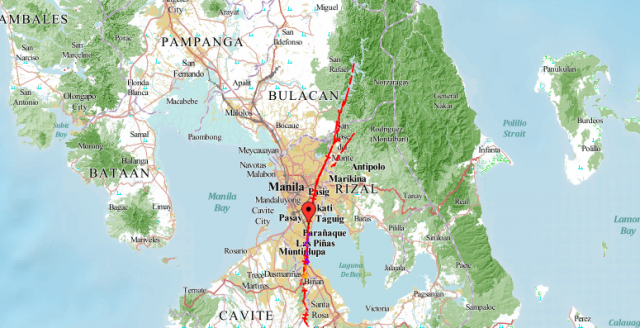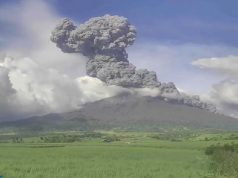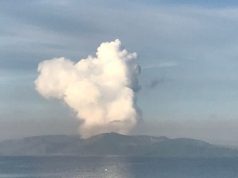Two versions of seismic maps of the Philippines posted on Twitter got some Filipinos worried over the hypothetical major earthquake tagged the “Big One.”
The maps revealed that nearly all the places in the country have experienced a tremor whether it is a strong or a weak one.
Digital map maker named David Garcia posted a photo of the Philippine map based on its seismic activity on April 23, the day after the powerful magnitude 6.1 Luzon earthquake.
There is no place in the Philippines that is completely safe. Rather, there are only places of varying risks and vulnerabilities – and hugot. #feelippines
(Here's a quakes map I made in 2017 for my MSc disso) pic.twitter.com/k5aTKXWBm4
— 𝐌 𝐀 𝐏 𝐌 𝐀 𝐊 𝐄 𝐑 (@mapmakerdavid) April 23, 2019
The blurred shot of his work showed that nearly all the regions in the country have experienced an earthquake with observable magnitudes from 6 to 7.
The incidents are shown to have taken placed from 1970 to 2016.
He said he made the map in 2017, apparently based on available government data.
“There is no place in the Philippines that is completely safe. Rather, there are only places of varying risks and vulnerabilities and hugot,” the user said in the caption.
Meanwhile, a reporter from a news organization also posted a similar photo of a map, this time, from the state-run weather agency.
LOOK: Epicenters of 25,100 historical and instrumentally recorded earthquake events from 1608 to 2016. The minimum magnitude of quakes plotted in this map is approx 4.2. pic.twitter.com/LKJaiYeagO
— Kat Domingo (@_katrinadomingo) April 24, 2019
Based on the details indicated, the map showed the epicenters of approximately 25,100 earthquakes recorded in the country from 1608 to 2016.
Only the province of Palawan appeared to be quake-free among the rest of Philippine territory similar to the previous map.
Some people in the comments section noted that Palawan and its neighbor Sulu, which was also seen not affected with earthquakes, were located above a different fault system.
The country is prone to seismic activities because it is part of a significant portion around the the Pacific Ocean called the “Pacific Ring of Fire.”
The Philippine Institute of Volcanology and Seismology or Phivolcs noted that the entire archipelago lies above a massive fault system called the Philippine fault zone or PFZ. It is 1,200 kilometers long and it traverses from Luzon to Mindanao.
“This arc-parallel, left-lateral strike slip fault is divided into several segments and has been the source of large-magnitude earthquakes in recent years,” Phivolcs indicated in its website.
In 2016, the agency developed an app called Fault Line Finder that allows Filipinos to identify the fault line of their residences and workplaces.
As of press time, this program can no longer be operated on desktop via Google Chrome.
What are fault systems?
The United States Geological Survey or USGS defines a fault as “a fracture or zone of fractures between two blocks of rock.”
Faults allow these blocks to move. Fast movements cause earthquakes whereas slow movements result in creeps or minor ground vibrations.
There are five different types of faults, namely, normal fault, thrust fault, strike-slip fault, left-lateral strike-slip fault and right-lateral strike-slip fault.
These cracks on the Earth’s surface may be small with barely noticeable movement while there are those visible from space such as the San Andreas Fault in California.
In the Philippines, the only most feared fault system in recent years is the West Valley Fault which traverses major parts in Metro Manila and the provinces of Bulacan, Laguna and Cavite.
Phivolcs Director Renato Solidum said that the projected 8.0-magnitude earthquake may come in moderate tremors or in one powerful rocking.
He emphasized that such a calamity cannot be predicted. What they can do is to monitor and prepare for it.
“Yung oras kung kailan mangyayari ang malakas na lindol, hindi masasabi. Pero puwede nating matantsa kung ano ang magnitude ng bawat fault na puwedeng ipakilos ng lindol,” Solidum said.
Phivolcs and the disaster management council reminded Filipinos to heed advice and announcements from government agencies only.
False information about “the Big One” designed to inspire fear started making rounds online after two powerful earthquakes hit several parts of the country last week.










